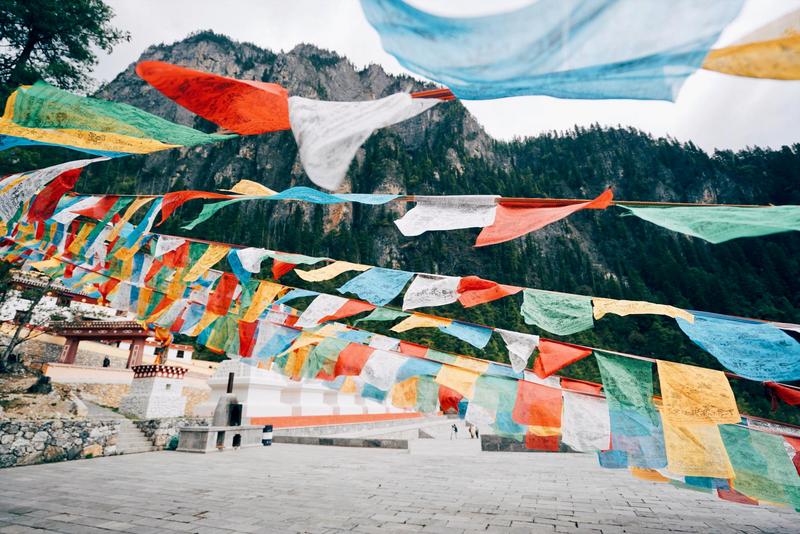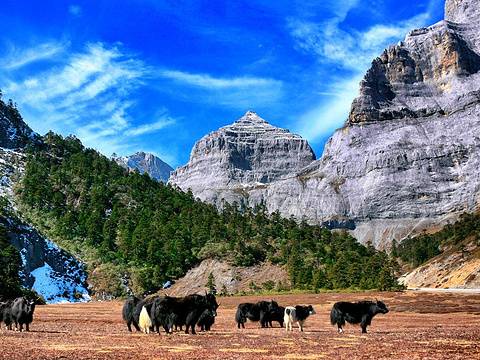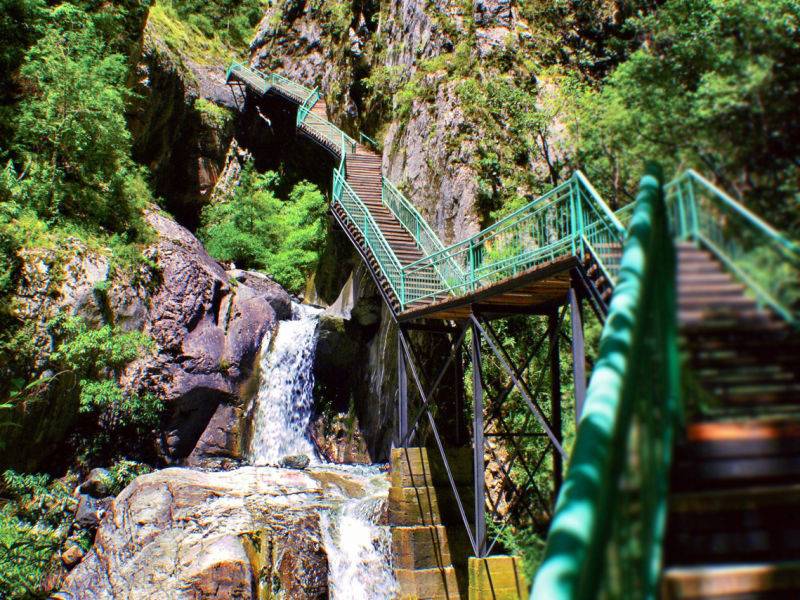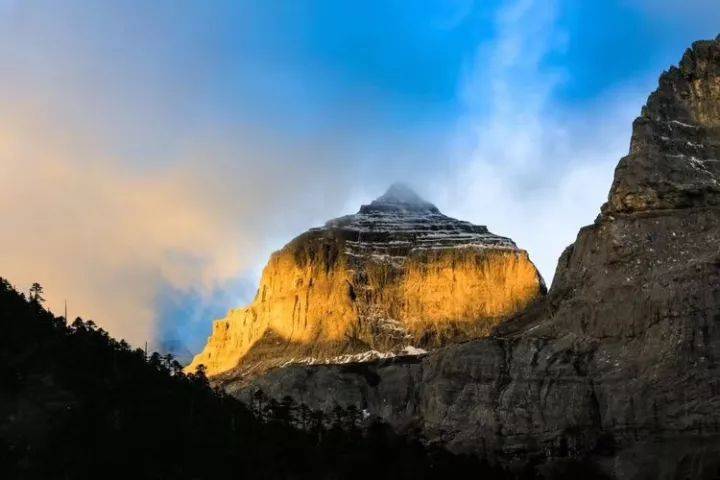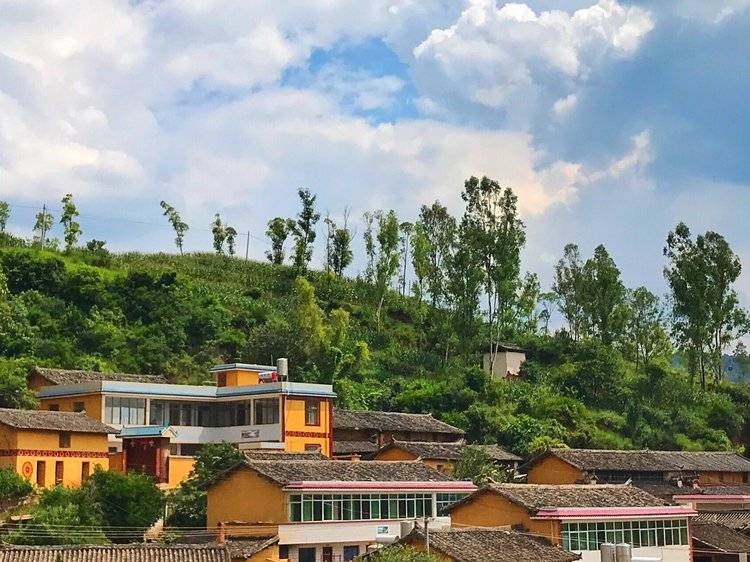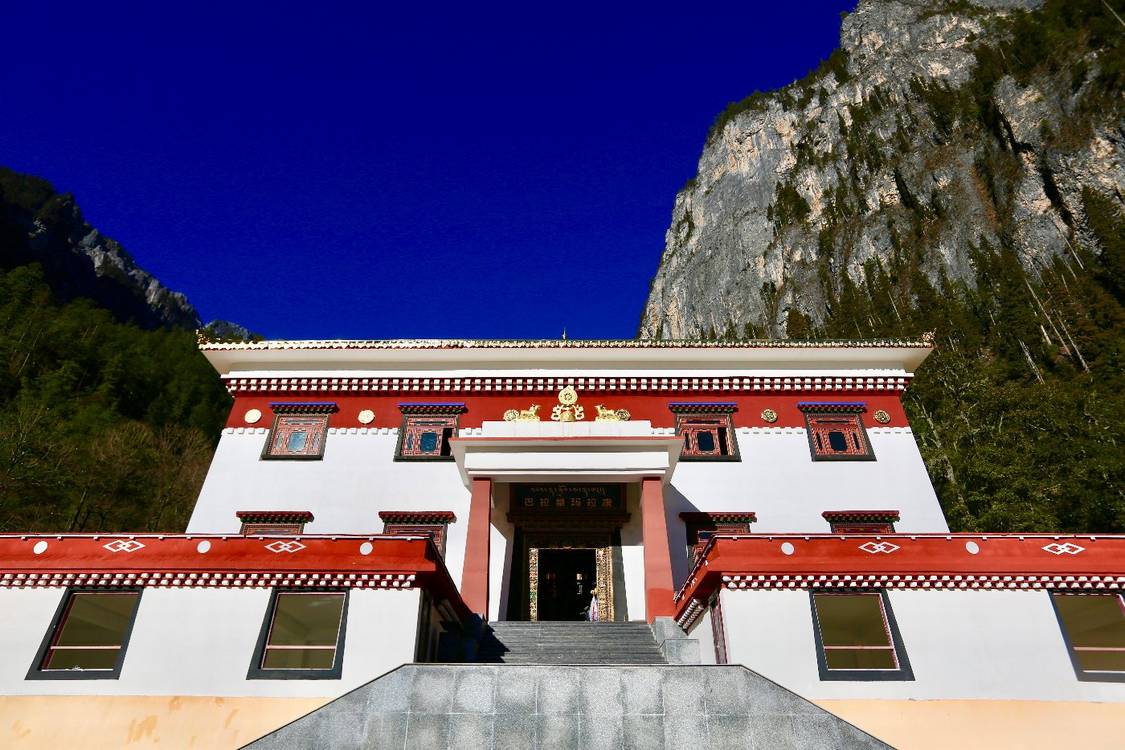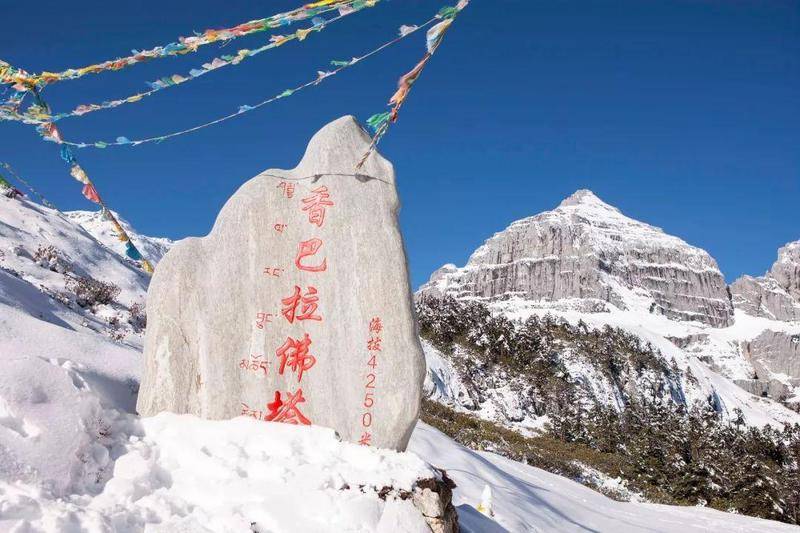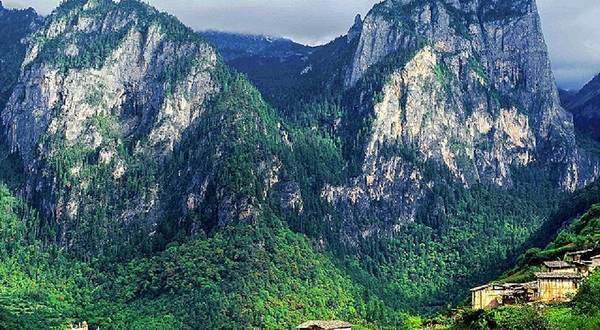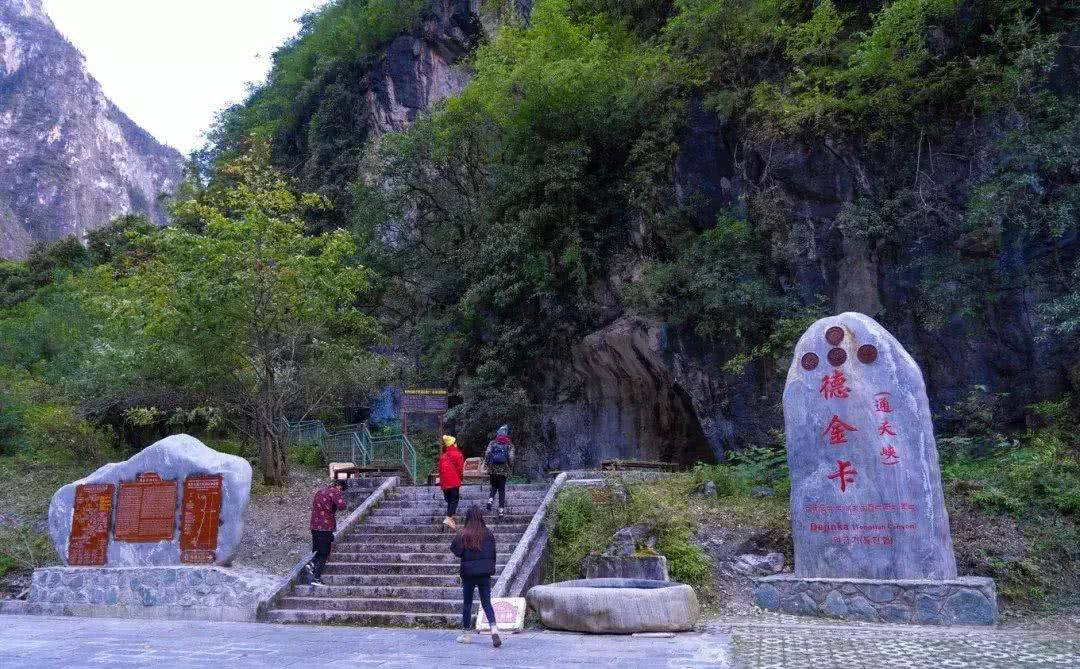5545M: Summit - Gezhong Snow Mountain
Gezhong Snow Mountain is the most sacred place in Balagezong and the highest peak in the entire Shangri-La. However, tourists and hikers cannot reach the summit. The snow mountain can be viewed from many places in the scenic area. Hikers can enjoy the sight of the 'Golden Mountain' at sunrise from the camping area. Best viewing spots: Bala Village, Echo Wall, Shambhala Pagoda, 99 Heavenly Road.
3500M: Secret Realm - Naidang Pasture
Naidang Pasture is a stop on the hiking route and was once the original residence of the Sna Dorje tribe. It features snow-capped mountains, meadows, rivers, and livestock. The idyllic pastoral scenery of this secret realm can only be seen on foot. Of course, there are hundreds of snow-capped mountains, highland pastures, and lakes deep within Balagezong, some of which even locals have never set foot in. These places might truly be the domain of the gods!
3000M: Cloud End - Echo Wall, High-altitude Zipline, and Glass Walkway
Bala Village is surrounded by eight sacred mountains, resembling the stamen of a blooming lotus flower. Just 100 meters above the village is the best spot to overlook the picturesque scenery - the Echo Wall. Due to the vast sky and deep canyon, the Bala people used to love singing here, and the Echo Wall would naturally harmonize with them, sending melodious notes back to Bala Village. If you have any worries, shouting loudly here can make you feel refreshed.
4050M: Yearning - Shambhala Stupa
The Shambhala Stupa is not a man-made stupa, but a naturally formed 'stupa' within the snow-capped mountains. It is also the highest point in the Balagezong Scenic Area that can be reached either by hiking or driving. From Bala Village, the road ascends to over 3000 meters, still lush and covered with vegetation. Further up, it transforms into a snow-covered plateau landscape. The Shambhala Stupa itself, at an elevation of 4250 meters at its pass, is an unparalleled secret realm of Tibetan land and a spiritual stupa where humans and gods communicate.
2900M: Scroll - Bala Village
Bala Village is the core of the Balagezong Scenic Area and the hometown of its creator, Sna Dingzhu. Originally, there were 32 households in the village, with colorful prayer flags and white pagodas at the entrance. The village has a history of over 1,300 years and has been rated as a characteristic ancient village. The village still retains its original appearance. Before the road was built, generations of Bala people lived here in isolation from the world. After 2007, the villagers moved to the county and city to live. However, with the development of Balagezong, more than 40 households have returned to live in more developed villages around Bala Village. Now, most of Bala Village has been preserved in its original state. After renovation, it has become a place where visitors can experience Tibetan life, with butter tea houses and manor hotels. Sna Dingzhu's home has been turned into the Bala Folk Culture Museum.
2700M: Faith - Balazhuomalakang
Balazhuomalakang is the temple of the Twenty-one Taras, dedicated to the twenty-one forms of Tara, and also serves as the Balagezong Tibetan Culture Exhibition Center. Tara is a female bodhisattva, symbolizing the ability to overcome disasters and suffering. About 1300 years ago, Tusi Sna Dorje built a Guanyin temple behind the Dayong mansion, which is the predecessor of Balazhuomalakang. At the entrance of Balazhuomalakang stand eight white stupas, forming the Dayong Stupa Group. Each stupa has a different significance. It is believed that circumambulating the stupas can bring good fortune and accumulate merit. Remember to circumambulate clockwise! These eight stupas are dedicated to representative Buddha statues: Shakyamuni Buddha, Guru Rinpoche, Amitayus, Four-armed Avalokiteshvara, Manjushri, Yellow Jambhala, Ushnishavijaya, and Tara.
2400M: Goddess - Bandanram Sacred Mountain
Bala Village is surrounded by eight sacred mountains, one of which is Bandanram. She is a female protector deity in Tibetan Buddhism, also known as 'Auspicious Heavenly Mother,' 'Auspicious Goddess,' and 'Glorious Queen.' Tibetans believe that worshipping her can ward off disasters and bring prosperity. The first viewing platform on the scenic tour bus route up the mountain is the Bandanram Viewing Platform. If you arrive before 9 AM, you can witness the sunrise from the mountain peak. Before roads were built in Bala Village, the villagers' ancestors had to trek for five days and nights to Shangri-La County to trade essential goods like salt and tea. The round trip often took ten to fifteen days. When the Kamba men returned, they would fire their hunting rifles at the Bandanram spot halfway up the mountain. Hearing the sound, the women in Bala Village would know their men were back and would prepare butter tea, tsampa, and other foods to reward the men for their long journey. The children in the village would eagerly wait at the village entrance to welcome them. Over time, Bandanram became a natural rest stop for the Bala people returning from their treks.
2200M: Steep - Shangri-La Grand Canyon
Shangri-La Grand Canyon is a typical U-shaped canyon with cliffs ranging from 200 to 1000 meters in height. The scenic area has built a 2.5-kilometer-long boardwalk along the cliffs, where you can observe various unique plants, including many valuable medicinal herbs. Looking down, you can see the slowly flowing Gangqu River. During the winter dry season, the afternoon sunlight creates a picturesque scene reminiscent of a paradise. Best photo spot: Echo Wall High-altitude Glass Walkway.
2100M: Profound - Dejin Ka (Tongtian Gorge)
Tongtian Gorge is a major branch of the Shangri-La Grand Canyon, and Dejin Ka is its Tibetan name. The distance from the bottom of the gorge to the top is approximately 4000 meters. The gorge is U-shaped, with different landforms on both sides of the mountains. Looking up from the bottom of the gorge, you can see a strip of blue sky. Tongtian Gorge leads directly to the highest peak in Shangri-La City - Gezong Snow Mountain. However, the currently constructed sightseeing route has a vertical distance of only 700 meters. Only the local Tibetans are likely capable of trekking over to Gezong Snow Mountain. While walking in the gorge, remember to look up often. The shapes of the sky are varied and unexpected, such as this 'Jade Ruyi'. They are nature's rewards for your journey!
